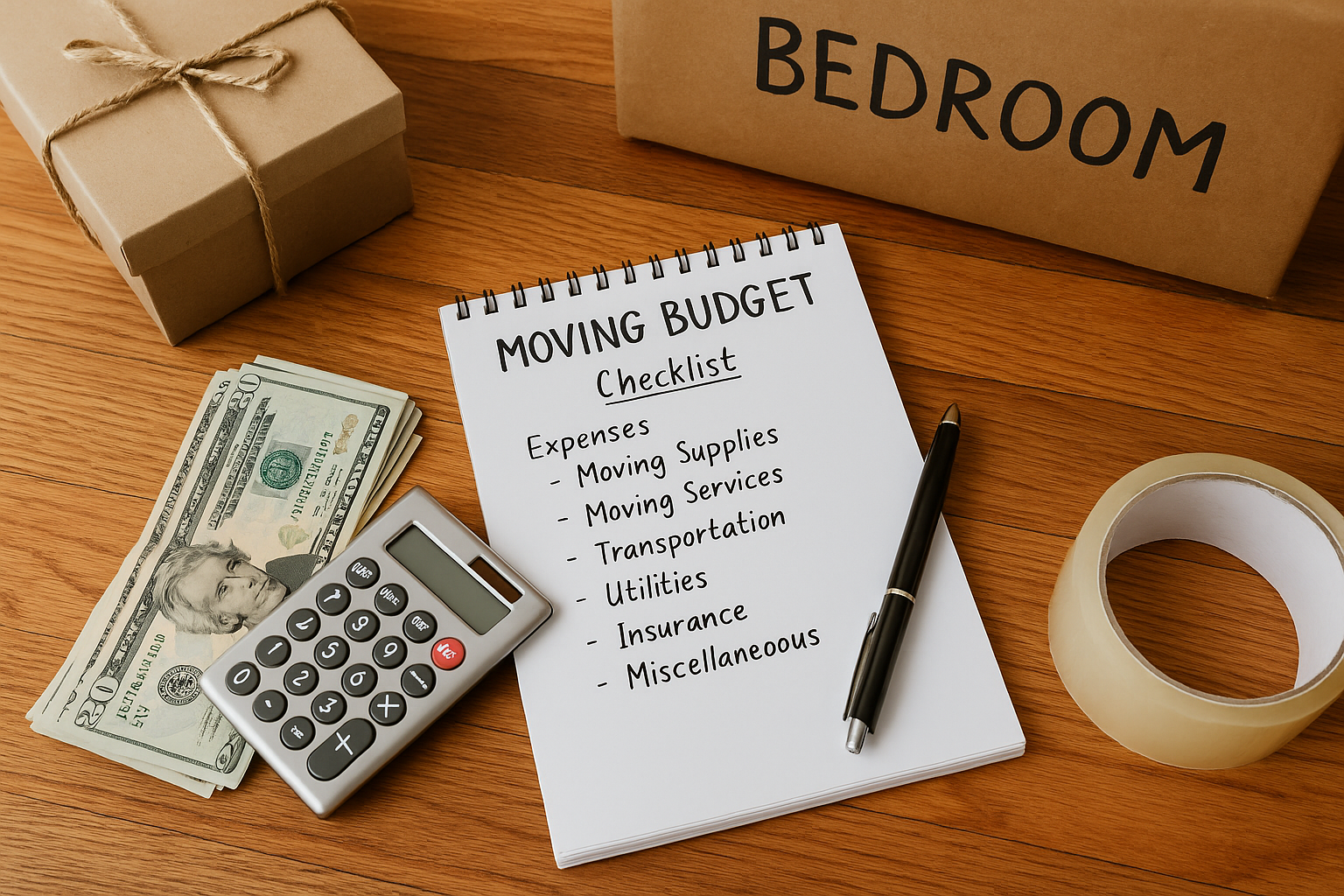Moving is already a life upgrade—you don’t need a surprise credit card bill to go with it. With a clear moving budget checklist, labeled accounts, and a simple decision tree (DIY vs. full-service vs. hybrid), you can build a relocation plan that protects cash flow and your sanity. Use the steps below to create an honest, flexible budget that actually works in the real world.
Step 1: Choose Your Move Type
- DIY: You pack, you drive. Cheapest on paper, higher time/energy cost.
- Full-service: Pros pack, load, transport, and unload. Highest price, lowest hassle.
- Hybrid: Movers handle the heavy stuff; you pack fragile or easy items. Often the best value.
Decision tip: If you value time, have stairs/heavy furniture, or are moving long-distance, price hybrid first. If the budget’s tight and the distance is short, compare DIY + a few paid hours of help for loading/unloading.
Step 2: Map the Real Costs (Not Just the Truck)
- Transportation: Truck rental or mover fees, fuel, tolls, parking permits, driver tip.
- Packing supplies: Boxes, tape, bubble wrap, furniture blankets, mattress bags.
- Labor/help: Movers by the hour or Tasker-style helpers (loading/unloading).
- Housing overlap: Pro-rated rent, double utilities, deposits, application fees.
- Utilities & services: Setup fees for electricity, gas, water, internet, trash.
- Travel & lodging: For long-distance: hotels, meals on the road, pet boarding.
- Cleaning & repairs: Move-out cleaning, paint, patching materials, carpet cleaning.
- New place setup: Small furniture gaps (curtains, shelves), tool kit, entry rugs.
- Contingency (10–15%): Because something always pops up.
Step 3: Build Your Relocation Plan (Cash Flow Friendly)
- Open a “Move Fund” (HYSA or labeled sub-account): Keep costs separate from daily spending.
- Automate transfers: From now to move date. Weekly is best for consistency.
- Stage purchases: Week 1 supplies, Week 2 utilities/deposits, Week 3 labor, Week 4 truck/movers.
- Hold a buffer: Keep 10–15% unassigned until the last week.
Moving Budget Checklist (Copy & Use)
- ☐ Get 3 quotes: full-service, hybrid (load/unload only), DIY + helpers
- ☐ Reserve truck/movers + building elevator/parking permits
- ☐ Order supplies (estimate 10–15 boxes per room)
- ☐ Schedule utility shutoff & start dates; confirm deposits/fees
- ☐ Book cleaners or set a DIY cleaning kit
- ☐ Plan travel days (lodging, meals, pet care)
- ☐ Photograph old place condition (for deposit return)
- ☐ Pack “Day 1” box (tools, sheets, toiletries, coffee, chargers)
Sample Budget (Hybrid Move, 2-Bedroom, In-City)
| Category | Amount | Notes |
|---|---|---|
| Movers (4 hrs @ $140/hr) | $560 | Load/unload only |
| Truck rental + fuel/tolls | $180 | One-day, local |
| Packing supplies | $130 | Boxes, tape, bubble wrap |
| Permits & parking | $60 | City curb permit |
| Cleaning/patching | $120 | DIY supplies or cleaner |
| Utilities setup fees | $160 | Electric, gas, internet |
| New place setup | $140 | Rods, hooks, entry mat |
| Contingency (12%) | $160 | Hiccups buffer |
| Total | $1,510 | Fund in “Move Fund” |
Timeline That Prevents Panic
- 6–8 weeks out: Pick move type; open Move Fund; request quotes; set savings transfers.
- 4 weeks out: Reserve movers/truck/permits; start decluttering (sell/donate to shrink volume).
- 2 weeks out: Order supplies; pack low-use rooms; schedule utility start/stop.
- 1 week out: Confirm elevator windows and parking; pack “Day 1” box; hold contingency cash.
- Move day: Tip crew if applicable; track spending; photograph both places.
- 1 week after: Return equipment, submit deposit claim, reconcile actual vs. budget.
Cost Traps to Avoid (and Easy Fixes)
- Underestimating boxes: Buy a bundle; return extras. Cheaper than last-minute runs.
- Weekend-only moves: Midweek can be cheaper for trucks and permits.
- Elevator/parking surprises: Reserve building elevator and curb space to avoid delay fees.
- New-stuff impulse buys: List true gaps first (curtains, trash cans). Wait one pay cycle for décor.
Quick Scripts (for quotes & fees)
- Movers: “Can you price load/unload only and a 3-hour minimum? What fees change if the building has stairs or no elevator?”
- Truck rental: “What’s the total out-the-door cost including mileage, insurance, toll pass, and fuel policy?”
- Utilities: “Are there connection or equipment fees I should expect on my first bill?”
- Landlord: “Can we schedule a pre-move walkthrough so I know exactly what’s required to receive the full deposit?”
Bottom line: A calm move comes from clarity: name your costs, stage your spending, and keep a small buffer. With a realistic moving budget checklist and a little automation, you’ll step into your new place without money chaos.
